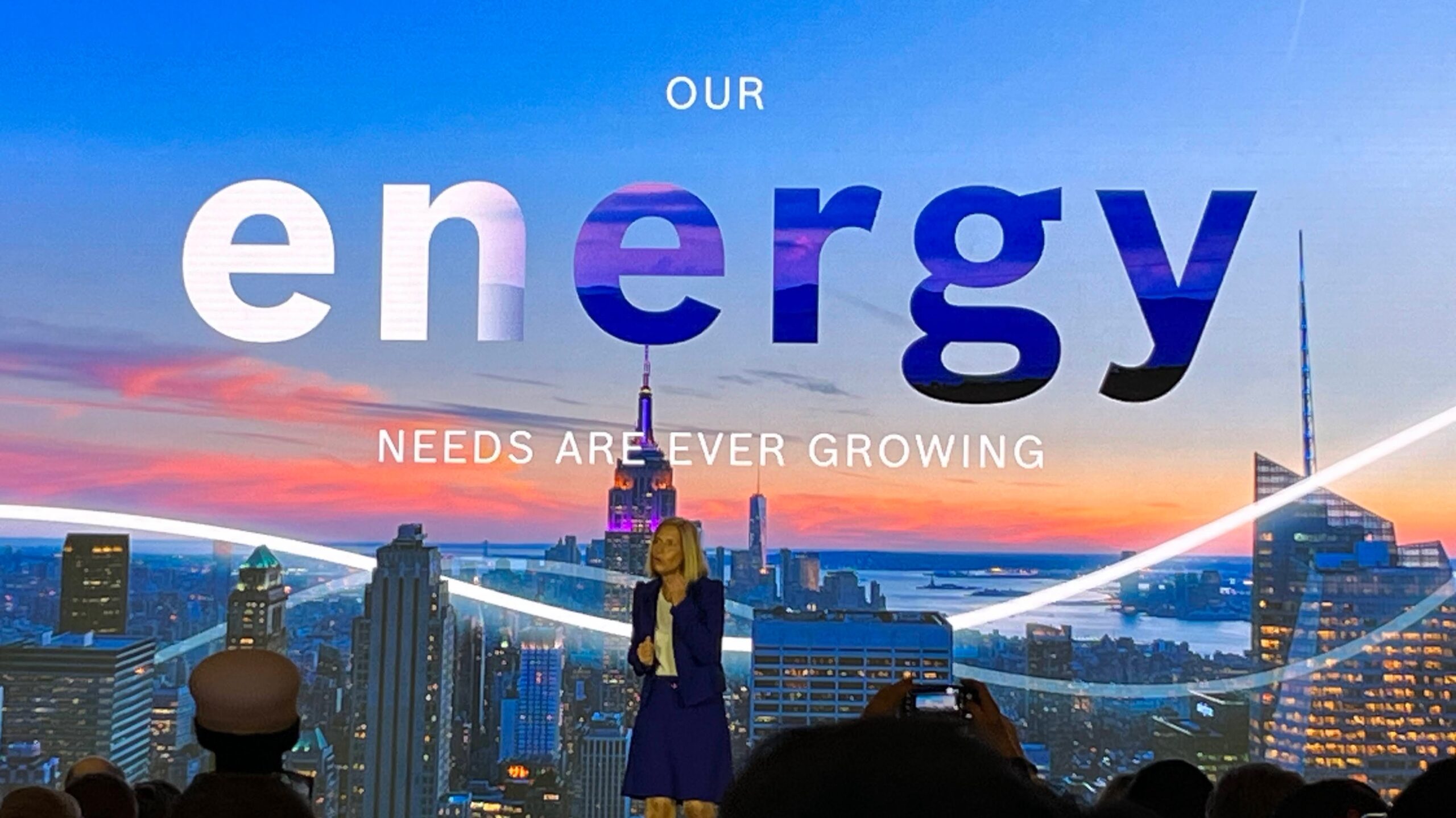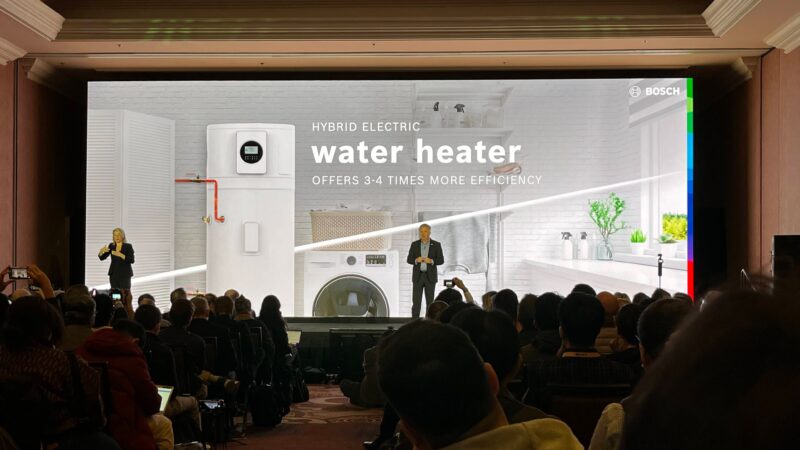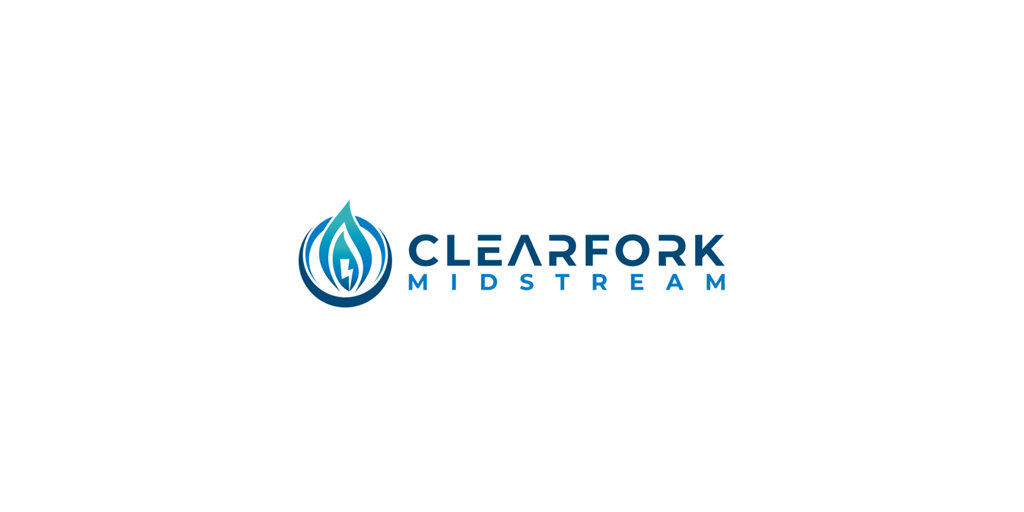Sign up for daily news updates from CleanTechnica on email. Or follow us on Google News!
Bosch kicked off its 2024 CES with an SNL-style skit with dancers, a song, and the introduction of the “like a Bosch” hashtag (literally “#likeabosch” on all the swag). There was some good and some … let’s go with questionable content there, but we’ll get to that in a minute. First, I want to issue a quick disclaimer: Bosch paid for me to fly out to Las Vegas and sleep in the Mandalay Bay hotel for the express purpose of being here to cover the company’s news. I am happy to oblige. As such, here’s the play-by-play, including many “live” notes and the inclusion of texts between Kyle Field, Paul Fosse, and me (where appropriate). Here we go.
The Play-by-Play

The Bosch room was mobbed with journalists — and presumably a lot of them, like me, are here on Bosch’s dime to cover whatever exciting new thing they’re ready to unveil. With four minutes to go, it’s standing room only. From our group text:
Dollars to donuts they say “AI” twice in the first five minutes.
Dr. Tanja Rückert, a member of the Bosch board of management, kicks it off strong, going right into energy and a global case of ever-increasing energy use with a harsh criticism of fossil fuels. Tonja makes an interesting comment. I’m paraphrasing here, but, “No one is saying we should go back to pre-industrial levels of consumption,” she says. “We need a balance to maintain modern levels of consumption with more sustainability.”
Rückert explains that Bosch is taking a dual approach to that sustainability, focusing on:
- Improved efficiency of traditional energy use
- Hydrogen
Bosch believes hydrogen will be central in meeting future energy needs, and the company claims to be investing in several key links of the hydrogen chain (they said “points,” but I don’t want to mix the metaphor). In addition to hydrogen fuel cells, which many CleanTechnica readers are no doubt familiar with, Rückert discusses hydrogen combustion and diesel mixing solutions.
Hydrogen engine. The pollution of gas at five times the cost!
Paul and Kyle immediately jump on the hydrogen angle. And I get it — CleanTechnica’s official position is that hydrogen will never work for passenger cars, but I agree with a number of industry analysts in the heavy truck and equipment space who say that, until the energy density of batteries improves significantly, the added mass of the batteries makes them impractical for heavy-duty applications.
Rückert is playing up the “challenge” of charging electric cars now, talking about the inconvenience of having to locate chargers and park near them — and offers a solution: Automated Valet Charging, or AVC.
AVC is an automated parking system that’s paired with a robotic arm that plugs a charger into your car. You pull up to the front of the Target or Best Buy or whatever, then “press a few buttons on your phone,” and the car autonomously goes to the charging station and tops off while you shop, swinging back to the front of the store to pick you up when you’re done shopping.
As brilliant as the AVC concept is, I think it could come with some challenges in the US. Certain people will ICE out the charging spots, the cars will get into accidents because Americans can’t behave properly in parking lots, etc. That’s not a failure on Bosch’s part. It’s a failure on ours — but maybe Bosch can program around it? We’ll see soon enough — they claim BMW is putting it into production.
We’re moving on now to silicon carbide chips. Bosch explains that silicon chips enable greater range and more efficient EV charging (up to 6% greater) by using 50% of the electrical energy that standard chips use.
The company will invest more than $1.5 billion into a new chip facility in Roseville, California, with production set to begin in 2026. Is that too slow?
The Tesla chips are coming online, the competition from Qualcomm and Geely/Volvo’s Black Sesame are also fast — where will they be by 2026? Hard to know.
Bosch is Coming Home

Re-focusing on its “improved efficiency of traditional energy use,” Bosch is set to debut a new heat pump for cold climates called IDS Ultra.
The company says IDS Ultra will be affordable and easy to install, and can cool or heat the home with outside temperatures as low as -13 degrees F. That should be good enough to cover most of the US, but in Chicago? Michigan? We’ve seen temperatures below -30°F in recent memory. What would we do then?
Bosch moves on quickly to a new hybrid heat pump water heater (shown above) that the company claims is 3–4 times as efficient as one of Bosch’s traditional electric water heaters — and that’s surprising, frankly, because Bosch has been a leader in home appliance energy efficiency for years, being an ENERGY STAR award winner more than once.
By the time I’ve typed that note, the presentation has moved on to the Bosch AMPShare battery platform. “If you work with power tools …”
No one in this room works with power tools.
There are more than 30 global partners in AMPShare, using the Bosch 18V cordless power tool batteries that I wish we had on neighborhood e-bikes. The AMPShare battery system, Bosch claims, allows contractors to use more tools with fewer batteries, reducing the amount of raw materials and batteries needed to keep the job site humming.
The presentation moves on to software, stating that software is a key enabler in achieving the goals of more sustainable, future mobility. In recognition of that, Bosch is realigning its mobility business as a software company for mobility and automation as it transitions to “the software-defined vehicle.”
Bosch is rolling out Wendy Bauer, who is a VP at AWS, and bringing her on stage is very much like bringing a Howitzer to a knife fight. Bauer immediately begins talking about a Bosch espresso machine that can connect with my car when I’m drowsy so that I have a hot espresso ready for me when I get home — which is asinine. Why does my car need to connect with my coffee maker? Why do I need to be immediately alert when I get home?
I have nothing positive to say about the connected espresso machine, other than it makes awesome coffee (I sampled that — it’s legit). Maybe I could get used to this?
Next up is a battery usage certificate for fleet managers that is absolutely awesome. The system tracks a number of variables in real time to deliver a precise state of health, enabling active fleet managers to prolong the usable battery life in their fleets’ EVs by up to 20%.
These vehicle health tools were developed specifically for fleet operators and can help them predict breakdowns and avoid delays and job stoppage that could cost millions. This is fantastic stuff, and I’ll cover it in greater detail as more information becomes available.
Bosch is now wrapping up — they’re talking about acquisitions, ESG goals, etc., and they close out with a political comment. “Unrealistic targets will get us nowhere,” she says. Which … ugh. Do I want to go back to pre-industrial levels of consumption? Honestly, I’d have to say that I would not. Would I like that to be the goal? Yes. Yes, I would — and I’d rather be a “shoot for the moon and end up among the stars” kind of guy, you know?
What about you guys? Head on down to the comments and let us know.
Have a tip for CleanTechnica? Want to advertise? Want to suggest a guest for our CleanTech Talk podcast? Contact us here.
Our Latest EVObsession Video
I don’t like paywalls. You don’t like paywalls. Who likes paywalls? Here at CleanTechnica, we implemented a limited paywall for a while, but it always felt wrong — and it was always tough to decide what we should put behind there. In theory, your most exclusive and best content goes behind a paywall. But then fewer people read it!! So, we’ve decided to completely nix paywalls here at CleanTechnica. But…
Thank you!
CleanTechnica uses affiliate links. See our policy here.




